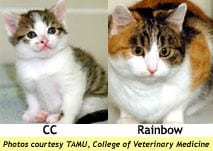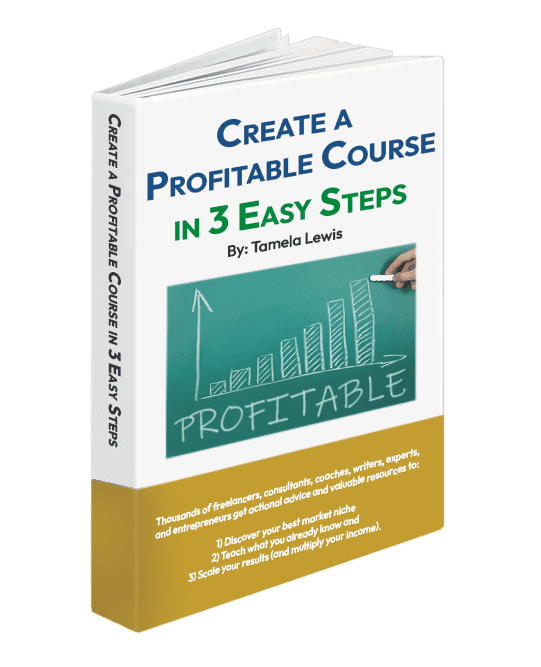NATURE VS. NURTURE: Which One Impacts You Most?
Nature vs. Nurture: Which one should you use to Follow Your Fit™ and which one impacts you most? Well, let’s explore that question together.
The Three Forces that Will Shape Your Life
Following Your Fit™ by its very nature implies a joining of two forces. The joining of these two forces becomes a third force: a unique Fit. As with all relationships, the relationship becomes a separate entity and will ultimately take on a life of its own. Rainbow and CC know something about this.
“These are much deeper waters than I had thought.” Sherlock Holmes (Arthur Conan Doyle)
“If you wish to make an apple pie from scratch, you must first invent the universe.” — Carl Sagan
Nature vs. Nurture: Famous Researchers Reveal the Truth Behind the Debate
 What if I told you that a calico cat named Rainbow and another cat called CC didn’t look anything alike? So what? you may ask. Well, what if I told you CC stood for Carbon Copy? Yes, CC was (and is) an exact genetic replica of Rainbow. Rainbow is calico. CC is black and white. [i]
What if I told you that a calico cat named Rainbow and another cat called CC didn’t look anything alike? So what? you may ask. Well, what if I told you CC stood for Carbon Copy? Yes, CC was (and is) an exact genetic replica of Rainbow. Rainbow is calico. CC is black and white. [i]
How can that be? Because what geneticists now know is that genes interact with the environment from the very first moment of conception; by the time, CC was born, the interaction between the genes and the environment produced a unique pattern. Environment did not fully determine the outcome; nor did genes. It’s the INTERACTION of the two—a very unique interaction [ii].
Nature vs. Nurture: More Surprising Results from Research
A gene does not a life make. Did you know researchers have now found that a neurotic-gened rat that grows up with good maternal care is not neurotic, but rather mellow and curious? Did you know a depressed-gene (5-HTT) rat doesn’t become depressed or suicidal unless he also experiences a deeply stressful event? Did you know a violent-gened rat doesn’t grow up to be violent unless he’s neglected and abused [iii].
Genetics only gives folks the propensities to seek things out in the Environment. Kids with genetic propensities, for instance, toward musical ability or sports, select environments to foster those abilities. Small differences in choices early on can make bigger and bigger differences later. You will seek out niches, modify your surroundings, select social interactions, and engage others in ways that are consistent with your genetic predispositions [iv].
As Walsh, a well-known niche researcher says, People influence environments and environments reciprocally influence people (B. W. Walsh et al., 2000). After years and years of debate, most scholars in psychology have adopted “some version of the interactional framework of the two variables of environment and people. This framework says that it is the person x (times) the situation that creates the behavior” (Walsh, Craig, Price, p. 62). New behaviors, new frameworks, and new ways of seeing—as well as new niches–develop with interaction.

Nature vs. Nurture: Why Understanding This Principle is the Fastest Way to Success
Everything is an interaction. If you think about it, your very existence is an interaction between you and something or someone else. Breathing is an interaction between your lungs and the air in the environment. Eating is an interaction between you and available food in the environment. Communication is the interaction between you and another person or group of people. Money is an interaction between you (and the value you contribute) and someone else (who values what you contribute).
Everything is about an interaction and a relationship. “Watts said the problems studied in social sciences often related to the link between individuals…and markets…
“A lot of the misunderstanding we have about the world comes from not understanding the interactions,… the networking.” (Matlock, 2011)
Nature vs. Nurture: Can You Identify the Forces that Propel or Hinder Your Success?
Your lifework, like genes, is not a blueprint. They are both more like a recording studio. Your genes are like the giant control board with all the knobs and switches you see in a recording studio. They turn on and off by signals from the environment. The same gene in a different environment will belt out a different tune. [v] And it’s that interaction of the DNA of the gene and the DNA of the environment that creates another layer of uniqueness—your unique Fit. And it’s that same type of interaction that creates your unique Fit.
Michael Meaney of McGill University in Montreal [vi] says, “There are no genetic factors that can be studied independent of the environment and there are no environmental factors that function independently of the genome. A trait emerges only from the interaction of the gene and the environment.” And that is exactly the way Niche Fit emerges.
Nature vs. Nurture: Why Does It Matter?
Solving the nature vs. nurture debate is only relevant to us because it impacts how you decipher Following Your Fit. Knowing which is which is the difficult part of “fit.”
Some things about you cannot be added, subtracted, or changed
by any amount of training. Fear of loud noises, for example, is something you were born with, fear of flying is something you learn.
If only everything else about us was so easy to decode. Let me make one distinction that may help you when you are thinking about your attributes.
Honor those as innate and revisit those that are learned.
“Never try to teach a pig to sing; it wastes your time and it annoys the pig.” Robert Heinlein (American science-fiction writer,1907-1988)
Skinner, a psychologist who spawned an entire philosophical revolution in psychology believed that there was no inherent anything (instinct, personality, nature)—in either animals or humans. Nada. Nothing. To Skinner, it was all 100% about training.
But then Breland and Breland discovered Sammy, the Dancing Chicken. All they were trying to do was to train the chicken to stand on a round platform, pull a loop that activated four musical notes, scratch (which released food pellets), eat pellets, get off the platform, and then go back to the cage. Repeat. But the chicken was doing far more than it was trained to do.
The Dancing Chicken
That crazy bird would start scratching, bobbing his head, turning circles, and doing other jive moves that were NOT in the training ritual. The scientists could not explain this behavior. They tried to extinguish the behavior—train it out of him. But to no avail. The chicken kept jiving.
Ultimately realizing these were feeding behaviors, the researchers were left with no other explanation except instinct—maybe some things are inborn. Sorry, Skinner.
Nature vs. Nurture
This may seem like common sense to you, but when researchers first started trying to understand the distinction between nature vs. nurture, they started from scratch (Ah, pun intended). B.F. Skinner famously believed that everything was learned. Sammy, the Dancing Chicken, danced his theory right out the door.
Other researchers came along and said exactly the opposite: everything is innate and then a training experiment would prove them wrong. The nature vs. nurture debate has raged for a very long time and still does.
Today, it still rages as scientists discover more and more about genetic and brain research, trying to sort through what is innate and what is learned. (And it matters for training and learning. Follow Your Fit™ and then add the training.)
No False Dilemmas for Us
In logic, they call this a “false dilemma” because it positions things are either/or when in fact, they are really both/and. Obviously, the nature vs. nurture debate is the same as the wave vs. particle debate. We are influenced by both nature and nurture.
Nature vs. Nurture. What is reality anyway?
There were two competing raging arguments about the nature of reality.
One theory stated that physical reality is made up of particles and is all about matter. The other theory was that physical reality is made up of waves and is about energy.
Neils Bohr decided to test it. He did one test and found out that the first theory was right: physical reality is about particles and matter. Then he constructed a second test and found out the second theory was right– physical reality was comprised of waves and was about energy. Both are true.
Nature vs. Nurture: How to Use This Secret to Create Your Ultimate Success
Just as a trait emerges from the interaction of the gene and the environment, so your niche Fit only emerges from the interaction of you and the environment. Creating beautiful rhapsodies in your niche is inspired by using both hands on the keyboard. Like the analogy I mentioned earlier, creating Fit is like playing the piano with both hands. While one hand creates the music from you, the other hand creates music from the environment and together a unique sound (or Fit) emerges.
Ibarra concludes you have to stop thinking and start doing. You have to work your way into a new way of working. (Ibarra, 2002)
Fit is where the sum of the parts is greater than the whole. In a good Fit, the interaction between you and the environment creates a “greater whole” with exponential beneFits. It’s where barriers are shattered, growth explodes, and an epic is born. Fit is the ultimate success.
Nature vs. Nurture & the Three Knowledges You Need
Resonance Frequency is when something is vibrating at perfect frequency for its size and shape. Basically, resonance frequency means it’s in sync with itself. It’s what happens when someone is singing and shatters a drinking glass by exaggerating its natural vibration. If you take a stemmed glassware and hold it at the base and then wet your finger with some “scientific spit,” with the right amount of moisture, pressure and speed, you can find the resonant frequency of a glass. Fit is about finding your resonance frequency.
In conclusion, Niche Success is about three Knowledges: a Knowledge of Fit (K.O.F.), a Knowledge of Self (K.O.S.), and a Knowledge of the Earning Environment (K.O.E.E.). Knowledge of Fit is about the dynamic exchange between you and the Environment. That wonderful interchange produces a Younique Fit, all your own.
References:
Hanscombe, K. B., Haworth, C. M., Davis, O. S., Jaffee, S. R., & Plomin, R. (2011). Chaotic homes and school achievement: a twin study. Journal of Child Psychology and Psychiatry, 52(11), 1212–1220, https://bit.ly/49oGoNu .
Hays, K. (2009, Feb 11). Cloned Cat Isn’t A Carbon Copy, from http://www.cbsnews.com/2100-205_162-537380.html
Ibarra, H. (2002). How to stay stuck in the wrong career. Harvard Business Review, 80(12), 40, 48p.
Matlock, S. (2011, April 11). Too often common sense is nonsense: Scientist’s book tells why intuition fails us, Santa Fe New Mexican, pp. A-1, A-6.
Nature vs. Nurture-Environment Effects Genes. (2005, April 22). The Wall Street Journal’s Science Journal.
Shenk, D. (Writer). (2010). The Genius in All of Us, C-Span2, Book TV.

